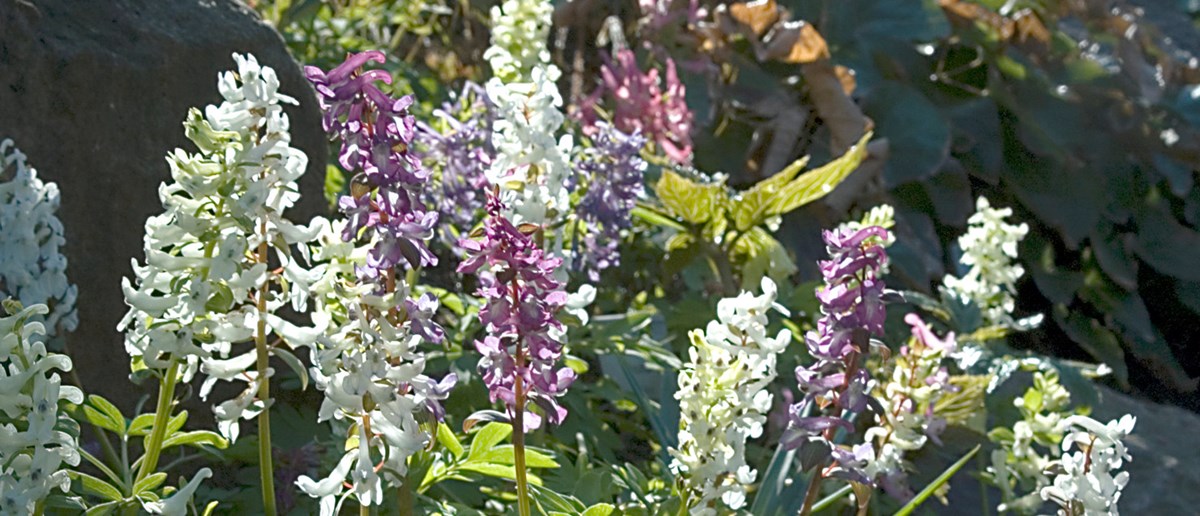Corydalis

Henrik Zetterlund is our horticultural curator at the Botanical Garden. His extensive knowledge about practical gardening is well known. He has collected many rare plants for Botaniska. One of his special interests is Corydalis and their relatives. The result so far is two books and one of the most comprehensive collections of Corydalis in the whole world.
Corydalis are very popular garden plants. About 150 species are currently cultivated in Europe and North America, and their popularity keeps on growing. In Europe, domestic species of Corydalis have been cultivated for several centuries as medicinal herbs. Corydalis cava, seen in the illustration above, was used for example to lower the blood pressure and prevent muscle spasms. With its very beautiful and rather oddly formed flowers, it is not at all strange that Corydalis also began to be cultivated as an ornamental plant.
"My interest in Corydalis began early on", Henrik Zetterlund tells us. "Per Wendelbo, the Director of the Botanical Garden in 1965 – 1981, inspired me. He was one of the world's leading experts on bulbs and tubers. Cooperation with Magnus Lidén, a world-famous Corydalis expert, has also been very important. Now Magnus Lidén is working in the Uppsala Botanical Garden."
The Corydalis genus has about 450 species. Most of them come from China and Tibet. Many species are still being discovered. Since 1980, more than 150 new species have been described.
"In Sweden there are five native species", recounts Henrik Zetterlund. "They are Corydalis gotlandica from Gotland, Corydalis cava, Corydalis pumila, Corydalis intermedia and Corydalis solida."
Henrik Zetterlund has visited almost all the places in the world where Corydalis and their relatives grow wild: Spain, Turkey, former Yugoslavia, the Alps, the Caucasus, Pakistan, China and western USA. Through these collection trips and contacts with generous cultivators, Henrik Zetterlund has contributed greatly to the Botanical Garden's having one of the most comprehensive collections of Corydalis in the whole world! During his trips he has also discovered two new species, Corydalis henrikii in southern Turkey and Corydalis zetterlundii in Macedonia.
The species belonging to the genus Corydalis live in a variety of habitats. Some species thrive best in the shade under deciduous trees, like Corydalis solida, Corydalis cava and Corydalis nobilis. They manage to complete their annual life cycle before the trees have come fully into leaf in the spring. Some species flourish best in a well-drained rockery, like Corydalis henrikii and Corydalis wendelboi. There are species that are very easy to cultivate, like Corydalis solida and others that are all the more demanding, like Corydalis benecincta from the Alpine screes in China.
Henrik Zetterlund is the co-author of two books in which you can read more about the Corydalis genus:
- Bleeding Hearts, Corydalis and their relatives (2008) by Mark Tebbitt, Magnus Lidén and Henrik Zetterlund.
- Corydalis – a gardener's guide and a monograph of the tuberous species (1997) by Magnus Lidén and Henrik Zetterlund.






